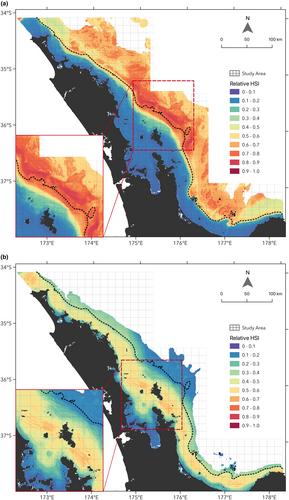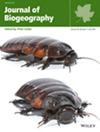Evidence of environmental niche separation between threatened mobulid rays in Aotearoa New Zealand: Insights from species distribution modelling
Abstract
Aim
Mobulid rays are a group of threatened batoid fishes susceptible to population decline from targeted fisheries and accidental capture. Spatial distributions of mobulid rays remain poorly known. Prior studies found commonalities between favourable environments and prey among various mobulid species, yet most were conducted in tropical waters. To explore the habitat use and distribution of mobulid rays in a temperate environment we model the habitat suitability of two mobulid rays (Mobula mobular and Mobula birostris) in Aotearoa New Zealand using fisheries and citizen science occurrence data spanning almost two decades.
Location
Northeastern coast of Aotearoa, New Zealand.
Methods
Boosted Regression Tree models were used to predict the annual habitat suitability and favourable environmental conditions of the two species based on available sightings records in conjunction with high resolution (1 km2) environmental data.
Results
The sympatric study species had contrasting habitat requirements. We found a separation in their spatial distribution defined by the 200 m isobath – the onshore extent for M. birostris and the offshore extent for M. mobular. While there were only subtle variations in relative habitat suitability for M. mobular over the study period, M. birostris exhibited greater interannual variability. Despite differing interannual patterns, spatial separation, as a function of environmental properties, persisted regardless of the year.
Main Conclusions
Our results suggest that associations between mobulid species may differ from tropical regions due to regional adaptations to prey availability or local environmental conditions unique to colder and more productive temperate waters. Our findings highlight the importance of multi-species surveys and the inclusion of temporal variability in support of separate species-specific management plans to account for differing stressors impacting each species.


 求助内容:
求助内容: 应助结果提醒方式:
应助结果提醒方式:


